Abstract
The bactericidal activity of cefazolin, cephaloridine, and cephalothin in a simulated intramuscular study (500 mg) and a simulated intravenous drip infusion study (2 g/2 h) is reported. In both model systems, the bactericidal activity of cefazolin surpassed that of cephalothin, and there were certain differences between cefazolin and cephaloridine in the simulated intramuscular study when human serum was used as a medium. In a routine reference static system, the drug levels were constant at the simulated peak level of each cephalosporin by both routes. In this system the three cephalosporins were equal in activity. In a third experiment, the effect of drug concentrations and exposure time on bactericidal activity of the cephalosporins was studied. The bactericidal activity of cephaloridine was the strongest of the three drugs when exposure time was 2 h and drug concentration was less than four times the minimal inhibitory concentration. At concentrations above four times the minimum inhibitory concentration, all three cephalosporins were equal in activity when the exposure time was 2 h.
Full text
PDF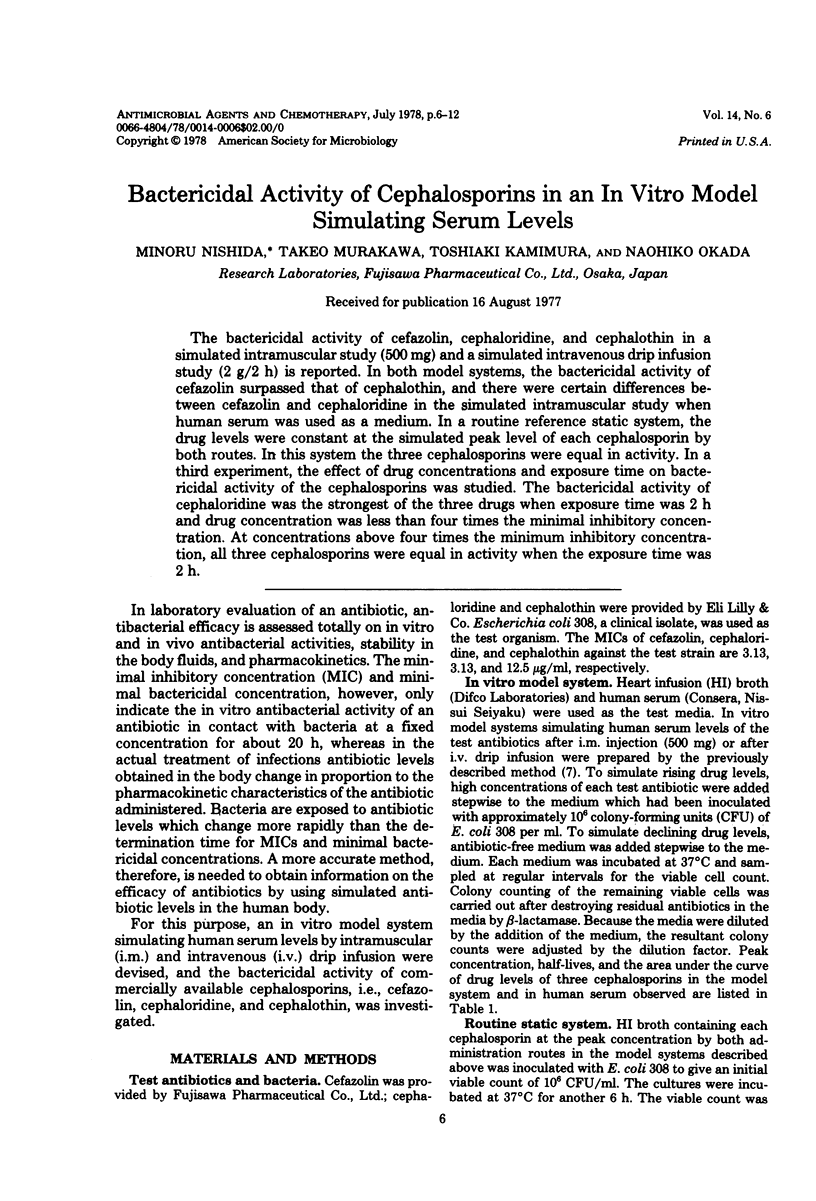
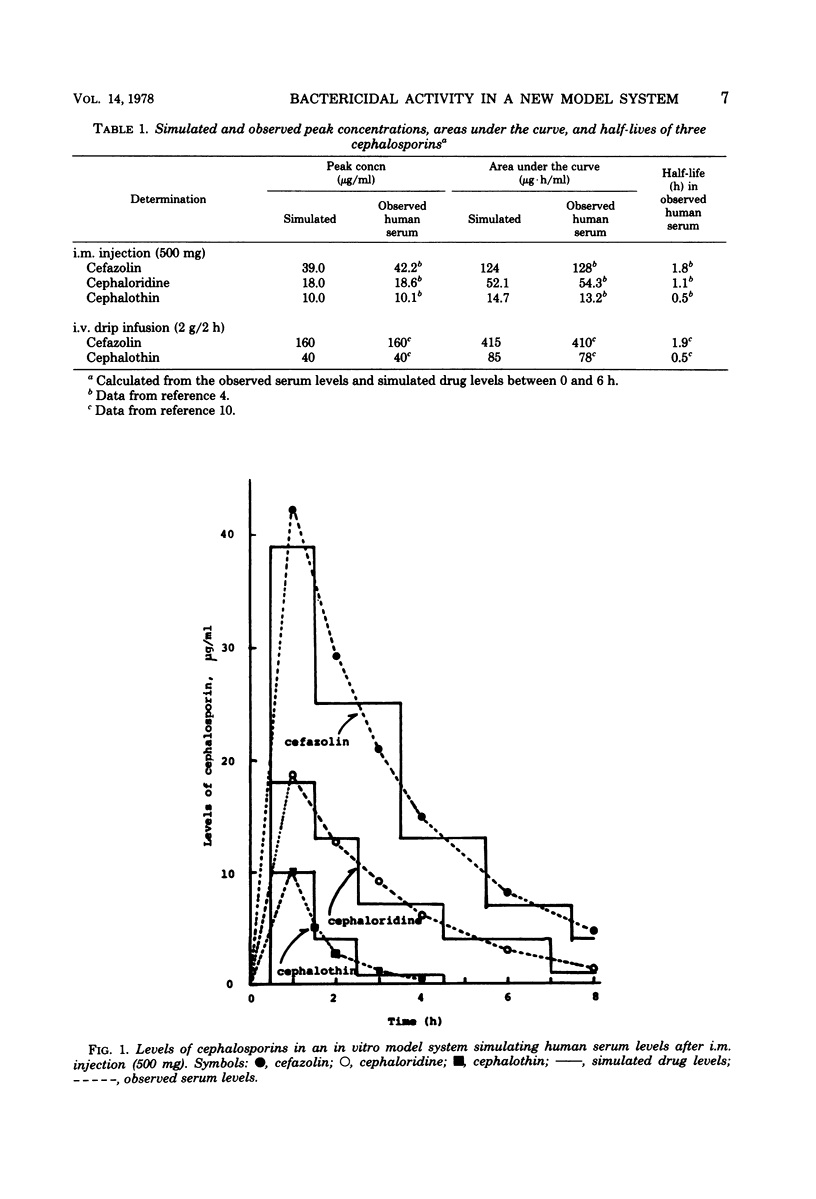
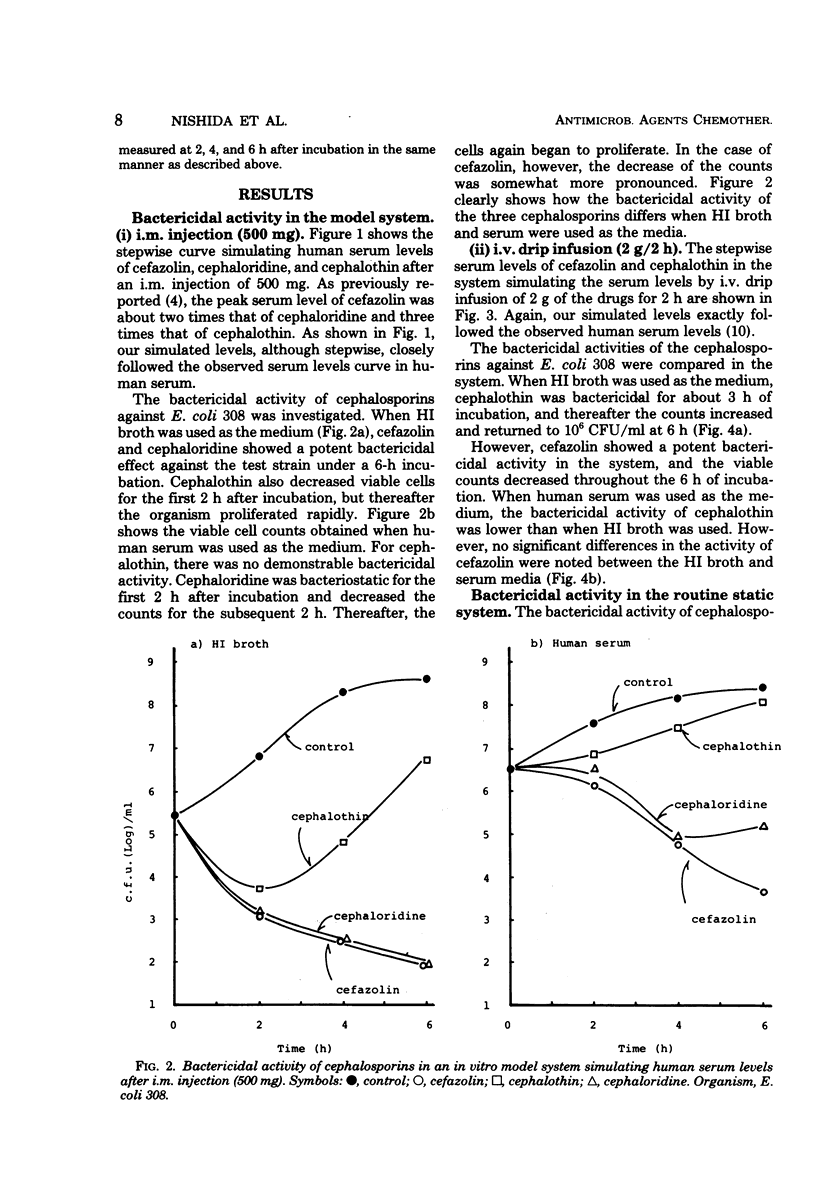
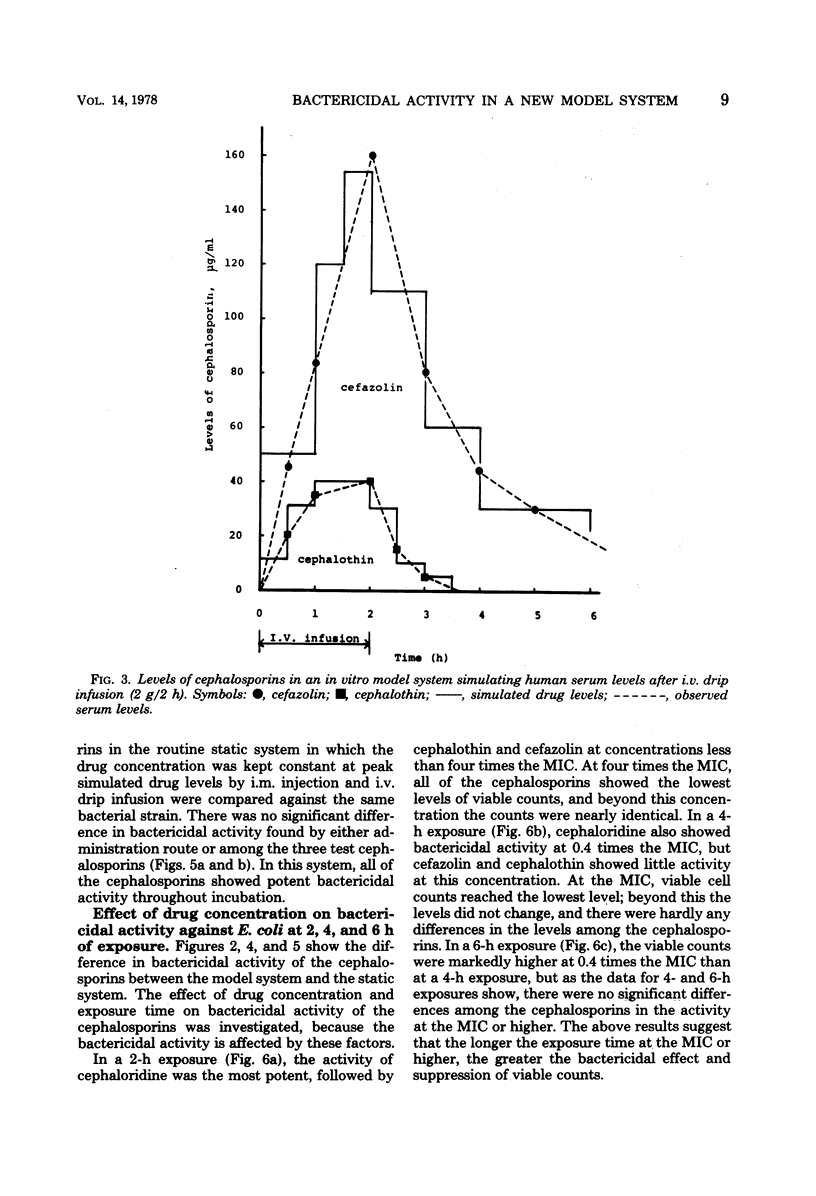
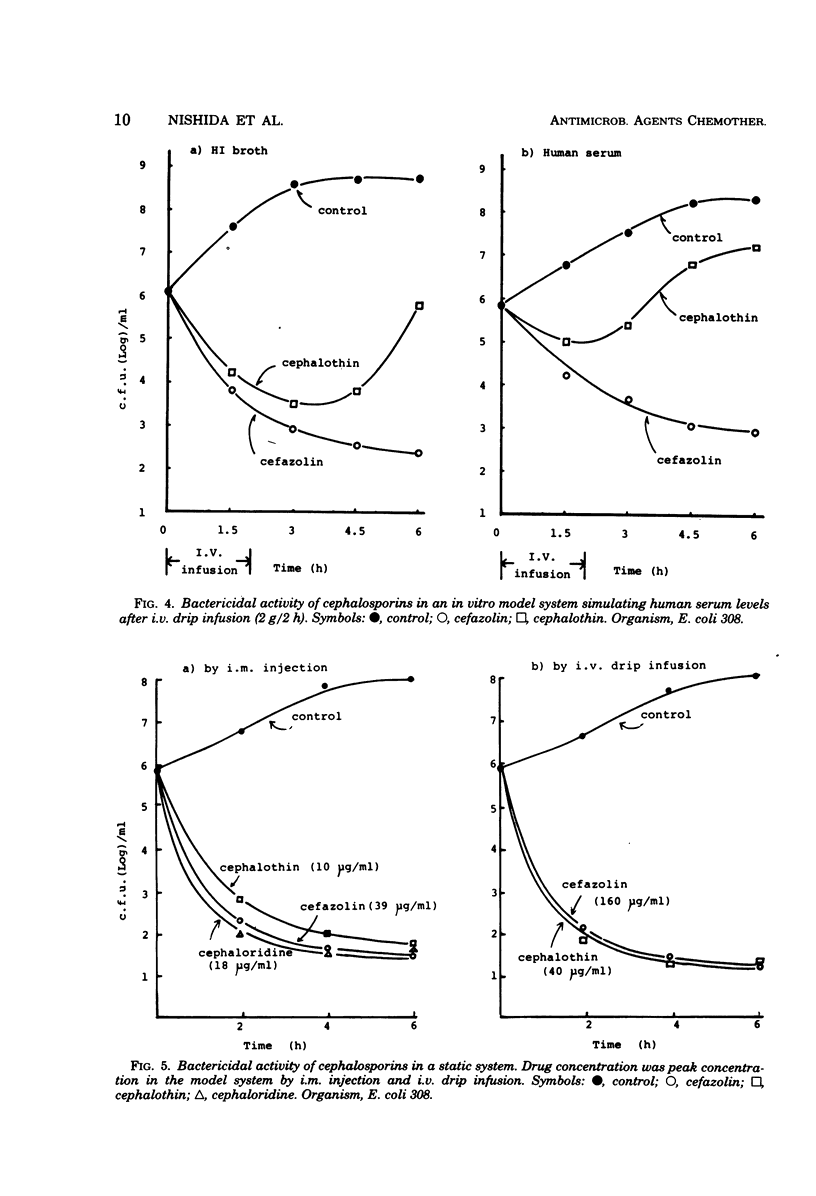
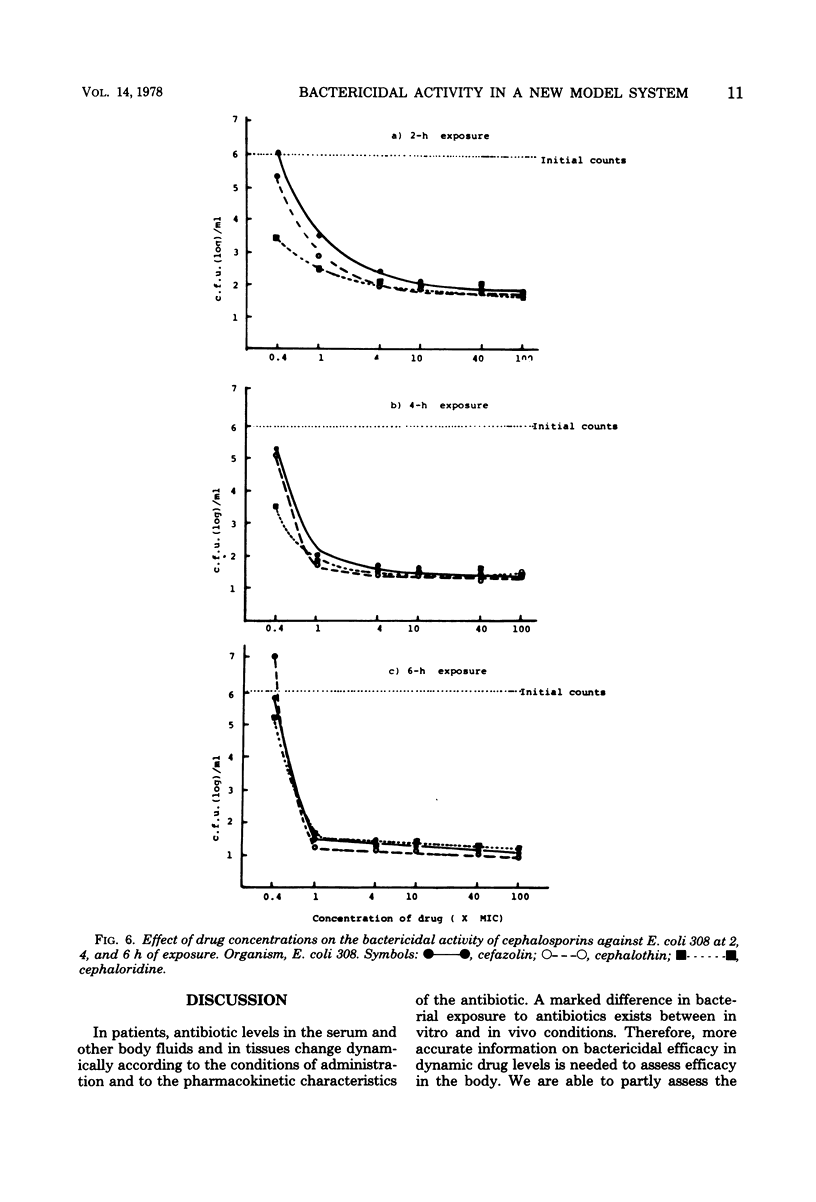
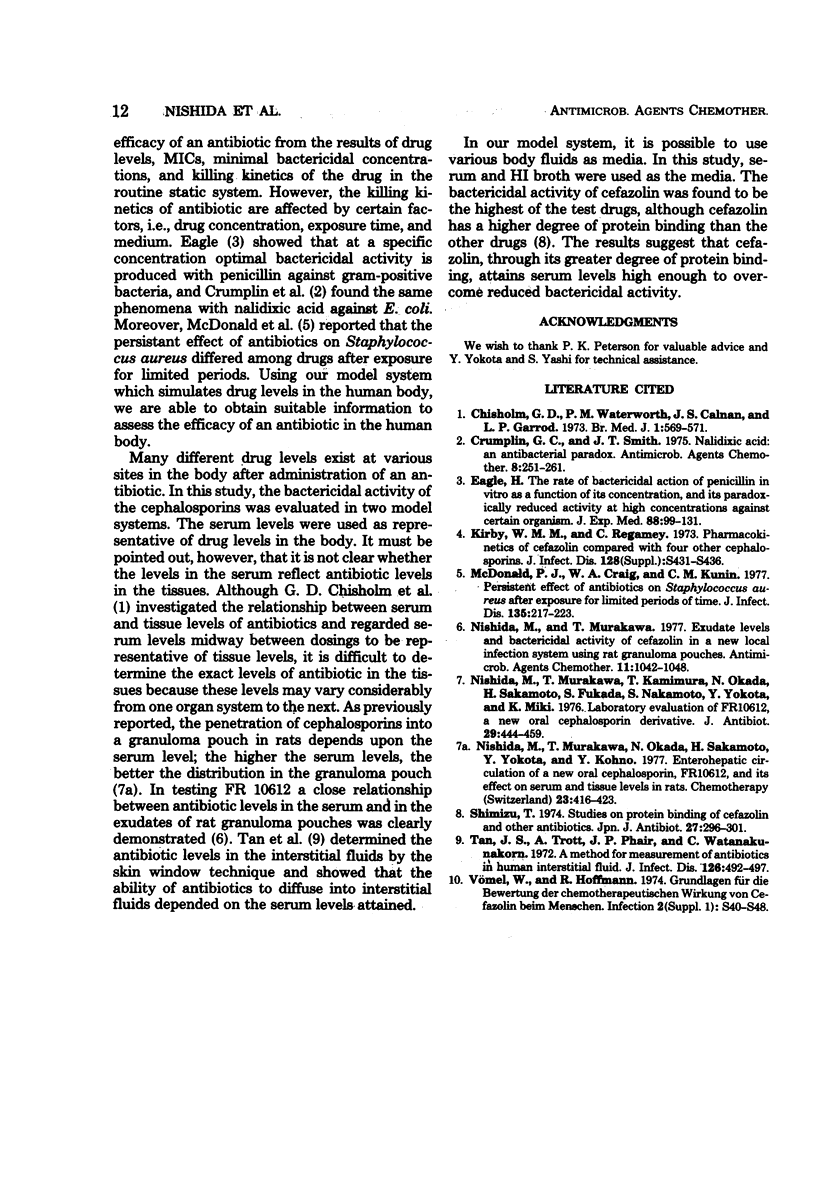
Selected References
These references are in PubMed. This may not be the complete list of references from this article.
- Chisholm G. D., Waterworth P. M., Calnan J. S., Garrod L. P. Concentration of antibacterial agents in interstitial tissue fluid. Br Med J. 1973 Mar 10;1(5853):569–573. doi: 10.1136/bmj.1.5853.569. [DOI] [PMC free article] [PubMed] [Google Scholar]
- Crumplin G. C., Smith J. T. Nalidixic acid: an antibacterial paradox. Antimicrob Agents Chemother. 1975 Sep;8(3):251–261. doi: 10.1128/aac.8.3.251. [DOI] [PMC free article] [PubMed] [Google Scholar]
- McDonald P. J., Craig W. A., Kunin C. M. Persistent effect of antibiotics on Staphylococcus aureus after exposure for limited periods of time. J Infect Dis. 1977 Feb;135(2):217–223. doi: 10.1093/infdis/135.2.217. [DOI] [PubMed] [Google Scholar]
- Nishida M., Murakawa T. Exudate levels and bactericidal activity of cefazolin in a new local infection system using rat granuloma pouches. Antimicrob Agents Chemother. 1977 Jun;11(6):1042–1048. doi: 10.1128/aac.11.6.1042. [DOI] [PMC free article] [PubMed] [Google Scholar]
- Nishida M., Murakawa T., Okada N., Sakamoto H., Yokota Y. Enterohepatic circulation of a new oral cephalosporin, FR10612, and its effect on serum and tissue levels in rats. Chemotherapy. 1977;23(6):416–423. doi: 10.1159/000222011. [DOI] [PubMed] [Google Scholar]
- Shimizu T. Studies on protein binding of cefazolin and other antibiotics. Jpn J Antibiot. 1974 Jun;27(3):296–301. [PubMed] [Google Scholar]
- Tan J. S., Trott A., Phair J. P., Watanakunakorn C. A method for measurement of antibiotics in human interstitial fluid. J Infect Dis. 1972 Nov;126(5):492–497. doi: 10.1093/infdis/126.5.492. [DOI] [PubMed] [Google Scholar]


